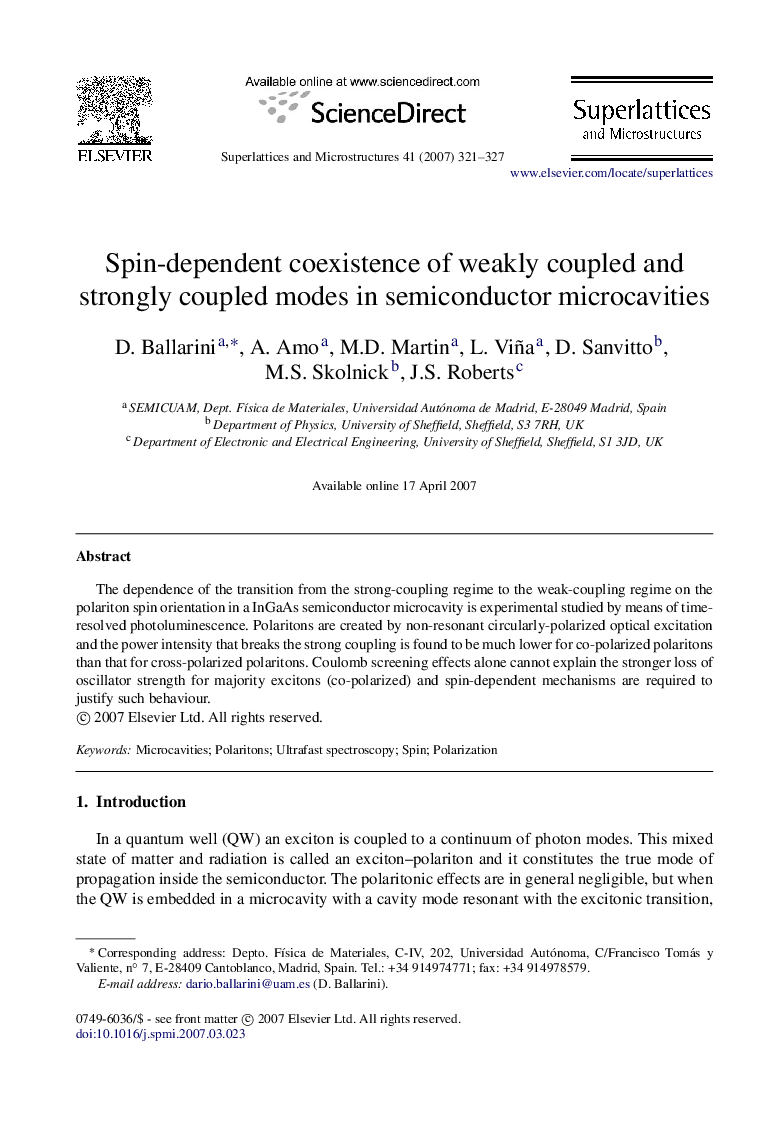| Article ID | Journal | Published Year | Pages | File Type |
|---|---|---|---|---|
| 1554956 | Superlattices and Microstructures | 2007 | 7 Pages |
Abstract
The dependence of the transition from the strong-coupling regime to the weak-coupling regime on the polariton spin orientation in a InGaAs semiconductor microcavity is experimental studied by means of time-resolved photoluminescence. Polaritons are created by non-resonant circularly-polarized optical excitation and the power intensity that breaks the strong coupling is found to be much lower for co-polarized polaritons than that for cross-polarized polaritons. Coulomb screening effects alone cannot explain the stronger loss of oscillator strength for majority excitons (co-polarized) and spin-dependent mechanisms are required to justify such behaviour.
Related Topics
Physical Sciences and Engineering
Materials Science
Electronic, Optical and Magnetic Materials
Authors
D. Ballarini, A. Amo, M.D. Martin, L. Viña, D. Sanvitto, M.S. Skolnick, J.S. Roberts,
